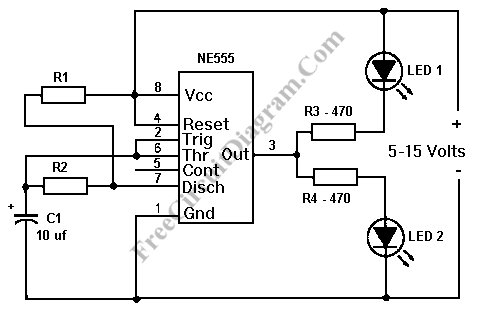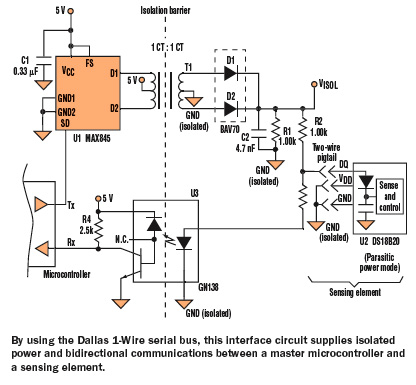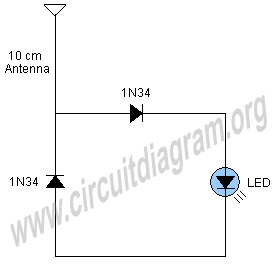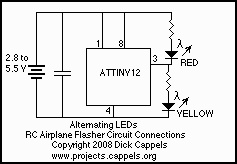
LED tilt level
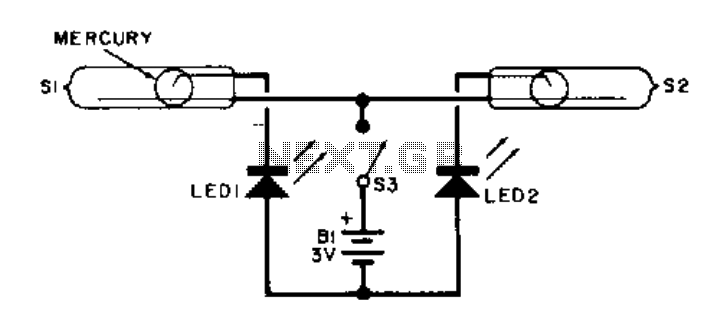
This electronic level utilizes two LED indicators in place of an air bubble. When the surface tilts to the right, one LED illuminates; conversely, if it tilts to the left, the other LED illuminates. Both LEDs light up when the surface is perfectly level. The device employs two unidirectional mercury switches, labeled S1 and S2. Each unidirectional mercury switch consists of one long electrode and one short, angled electrode. The mercury pool "rides" on the long electrode and creates contact between the two electrodes when the device is held horizontally.
The electronic level circuit operates on the principle of gravity and the conductive properties of mercury. The unidirectional mercury switches S1 and S2 are strategically positioned within the device to detect the tilt of the level. In a horizontal position, the mercury pools in the switch, bridging the gap between the long and short electrodes, thus completing the circuit. This closure activates both LED indicators, signaling that the surface is level.
When the level is tilted to the right, the mercury shifts away from S2 and moves toward S1, breaking the connection at S2 and allowing the LED associated with S1 to illuminate. Similarly, if the level tilts to the left, the mercury moves towards S2 and away from S1, causing the LED linked to S2 to light up. This dual LED indicator system provides a clear visual representation of the surface's orientation, enhancing usability in various applications where precise leveling is critical.
In terms of circuit design, a power supply, typically a battery, is required to provide the necessary voltage to the LEDs. Resistors may be included in series with the LEDs to limit the current and prevent damage. The circuit layout must ensure that the mercury switches are positioned accurately to respond to the slightest tilt, thereby increasing the sensitivity and reliability of the electronic level. Overall, this design offers a practical and efficient alternative to traditional bubble levels, making it suitable for use in construction, carpentry, and various engineering applications.This electronic level uses two LED indicators instead of an air bubble. If the surface is tilted to the right, one LED lights; if it's tilted to the left, the other LED lights. When the surface is level, both LEDs light. It uses two unidirectional mercury switches, SI and S2. The unidirectional mercury switch has one long electrode and one short, angled electrode. The pool of mercury "rides" on the long electrode and makes contact between the two electrodes if the unit is held in a horizontal position.
The electronic level circuit operates on the principle of gravity and the conductive properties of mercury. The unidirectional mercury switches S1 and S2 are strategically positioned within the device to detect the tilt of the level. In a horizontal position, the mercury pools in the switch, bridging the gap between the long and short electrodes, thus completing the circuit. This closure activates both LED indicators, signaling that the surface is level.
When the level is tilted to the right, the mercury shifts away from S2 and moves toward S1, breaking the connection at S2 and allowing the LED associated with S1 to illuminate. Similarly, if the level tilts to the left, the mercury moves towards S2 and away from S1, causing the LED linked to S2 to light up. This dual LED indicator system provides a clear visual representation of the surface's orientation, enhancing usability in various applications where precise leveling is critical.
In terms of circuit design, a power supply, typically a battery, is required to provide the necessary voltage to the LEDs. Resistors may be included in series with the LEDs to limit the current and prevent damage. The circuit layout must ensure that the mercury switches are positioned accurately to respond to the slightest tilt, thereby increasing the sensitivity and reliability of the electronic level. Overall, this design offers a practical and efficient alternative to traditional bubble levels, making it suitable for use in construction, carpentry, and various engineering applications.This electronic level uses two LED indicators instead of an air bubble. If the surface is tilted to the right, one LED lights; if it's tilted to the left, the other LED lights. When the surface is level, both LEDs light. It uses two unidirectional mercury switches, SI and S2. The unidirectional mercury switch has one long electrode and one short, angled electrode. The pool of mercury "rides" on the long electrode and makes contact between the two electrodes if the unit is held in a horizontal position.

